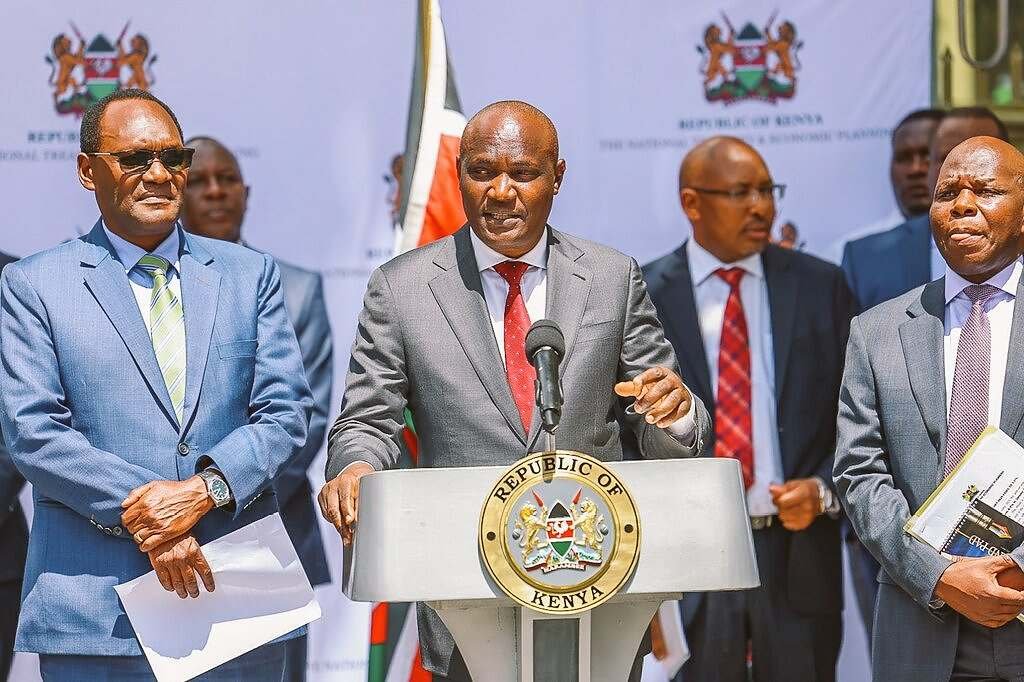TSC Teachers Face Salary Uncertainty as Ksh27 Billion Budget Deficit Hits Education Sector


Kenya’s education sector is facing a major financial crisis, with a Ksh27 billion budget deficit threatening critical programs, teacher salaries, and student welfare. Teachers employed by the Teachers Service Commission (TSC) are among those most affected, as funding gaps put timely salary payments at risk.
The budget shortfall has raised serious concerns about the sustainability of the Free Day Secondary Education (FDSE) program, the Kenya National Examinations Council (KNEC) exams, and school feeding programs, which are already struggling with limited funds. This crisis threatens to paralyze key education services, leaving thousands of teachers and learners in uncertainty.

Teacher Salaries at Risk
One of the most alarming concerns is the potential delay in salary payments for TSC-employed teachers. The government had allocated funds for salaries, but due to the deficit, it may not be able to disburse them on time.
Who Will Be Affected?
- Newly confirmed teachers – Those recently employed by TSC, who are still stabilizing financially, could experience salary delays.
- Intern teachers – Since interns earn lower stipends, any delay would worsen their financial struggles.
- Teachers on contract or awaiting promotions – Those expecting salary adjustments due to recent promotions may face delays in their pay increments.
If the government fails to address this issue promptly, thousands of teachers may struggle to meet their financial obligations, leading to widespread frustration and possible disruptions in learning.
Key Areas Facing Funding Gaps
1. Junior Secondary Schools (JSS) Underfunded
Kenya’s Competency-Based Curriculum (CBC) implementation in Junior Secondary Schools (JSS) is facing a Ksh4 billion shortfall, which has led to:
- Delayed capitation funds – Schools depend on these funds to buy teaching materials, pay support staff, and facilitate learning activities.
- Lack of proper infrastructure – Many JSS schools still lack classrooms, science laboratories, and digital learning tools, slowing down CBC implementation.
- Teacher shortages – The lack of funds means the government may delay hiring more JSS teachers, leaving the current workforce overburdened.
Without urgent intervention, the quality of education in JSS will continue to decline.
2. KNEC Exams in Jeopardy
The Kenya National Examinations Council (KNEC) is facing a Ksh3.57 billion budget deficit, which could directly impact KCSE, KCPE, and KPSEA national exams.
- Exam paper printing and distribution could be delayed, causing logistical challenges, especially in remote areas.
- Increased risk of exam malpractice – Budget constraints may lead to weakened security measures, increasing the likelihood of exam leakages.
- Delayed payments for exam markers – Teachers who participate in marking national exams may experience significant delays in receiving their payments.
Without adequate funding, the credibility and efficiency of Kenya’s national examination system could be compromised.
3. Free Day Secondary Education (FDSE) Program Underfunded
The Free Day Secondary Education (FDSE) program, which supports nearly one million students, is facing a Ksh21.85 billion deficit. The government had allocated Ksh54.886 billion, but schools require Ksh76.654 billion for smooth operations.
Effects of This Shortfall:
- Delayed school capitation funds – Secondary schools may not receive enough funds to cover essential services, affecting learning materials and operational costs.
- Increased financial pressure on parents – Parents may be forced to contribute more money to sustain school programs.
- Compromised quality of education – Schools may struggle to pay non-teaching staff, purchase learning materials, or maintain facilities.
If the government does not address this funding gap, thousands of students from low-income families could be forced to drop out.
4. School Meals Program Facing a Funding Crisis
One of the most affected areas is the school feeding program, especially in marginalized and drought-stricken regions.
- Low-cost boarding schools severely underfunded – The program, which supports over 411,000 students, is struggling to sustain daily meals.
- Funding per student is inadequate – Schools are allocated Ksh5 per child per day, well below the Ksh11 needed for proper nutrition.
- Risk of malnutrition and school dropouts – If food supply is cut, many learners, especially in arid and semi-arid areas, may be forced to drop out due to hunger.
This crisis threatens not just education but also the health and well-being of thousands of students.
What Next? Possible Solutions
The Ministry of Education has acknowledged the crisis and is seeking solutions to fill the funding gaps. Some potential measures include:
- Budget reallocation – The government could prioritize education funding in the next budget review.
- Seeking donor funding and partnerships – International organizations and NGOs could help fill some of the gaps, especially in feeding programs.
- Efficient resource management – Proper auditing and accountability could ensure available funds are used effectively.
- Advocacy by teacher unions – KNUT and KUPPET should continue pushing for salary security and adequate funding for schools.
Conclusion
The Ksh27 billion education budget deficit has far-reaching consequences for teachers, students, and the entire education system. If the government does not act swiftly, teachers may face salary delays, schools may struggle to operate, and students may suffer from inadequate learning resources.
As uncertainty looms, teachers, parents, and other stakeholders must remain vigilant and demand that the government prioritizes education funding to protect the future of Kenya’s learners.




